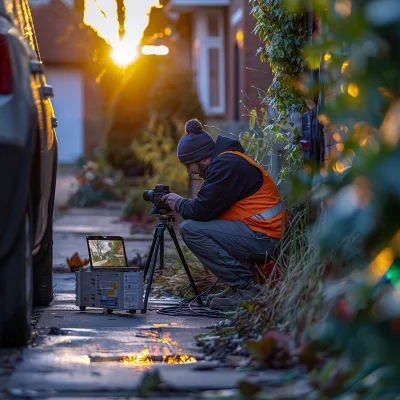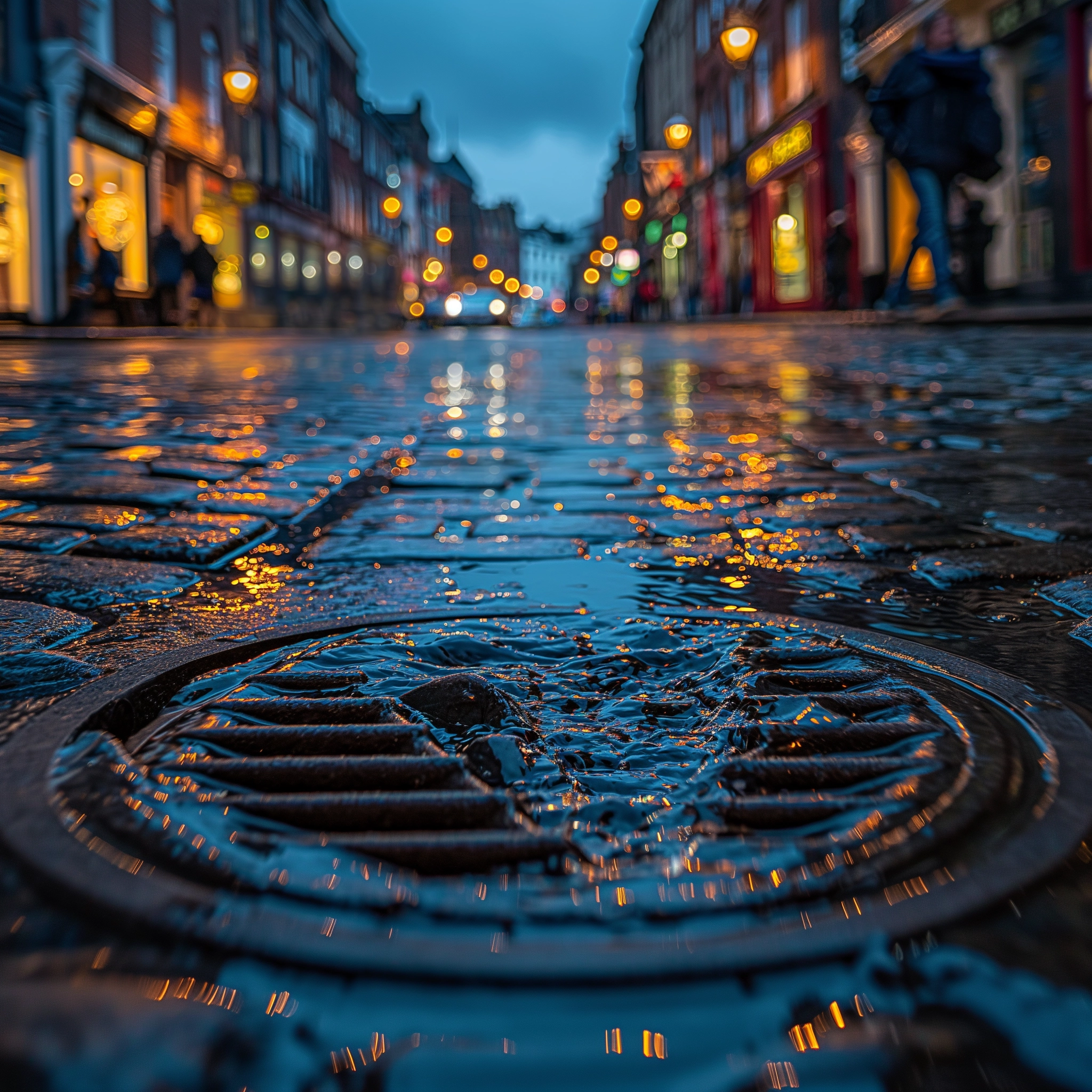Understanding the intricate process of a drainage survey is crucial for property owners, especially those managing residential or commercial spaces. T
Understanding the intricate process of a drainage survey is crucial for property owners, especially those managing residential or commercial spaces. This specialised assessment serves multiple purposes, primarily aimed at ensuring the condition of the drainage system, maintaining compliance with regulatory standards, and preemptively addressing potential problems that could lead to costly repairs or damage.
Purpose of a Drainage Survey
A drainage survey is primarily conducted to assess the current condition of a property’s drainage system. This is essential for identifying any existing issues, such as blockages, leaks, or structural faults, that could disrupt the drainage system’s normal function. Moreover, these surveys help ensure that the property complies with local and national standards, a critical step for property owners to avoid legal and financial penalties.
The preventive nature of the survey also aims to mitigate risks by foreseeing potential problems that could lead to significant infrastructure damage. Early detection allows for more cost-effective and less invasive solutions, which is particularly beneficial in maintaining the longevity and value of the property.
Tools Used in Drainage Surveys

Modern drainage surveys are supported by various high-tech tools that enhance the accuracy and efficiency of the inspection. Closed-Circuit Television (CCTV) cameras are pivotal in these inspections, providing real-time visual feedback on the internal state of drainage pipes. This visual inspection is crucial as it identifies immediate and potential issues without the need for invasive techniques.
In addition to CCTV, dye tracing and sonar units play significant roles. Dye tracing involves introducing a non-toxic dye into the drainage system to track water flow and identify leakage points. Sonar units assess the integrity of pipes and other hidden structures, providing a clear picture of the subsurface conditions without needing physical excavation. These tools collectively enable a thorough diagnostic process that is both detailed and minimally disruptive.
Process of Conducting a Drainage Survey
The process of a drainage survey is methodical and involves several key steps:
- Setup: This initial phase involves preparing the necessary equipment and ensuring that all access points to the drainage system are available and safe to use. Proper setup is crucial to ensure the survey is conducted efficiently and safely.
- Inspection: Using the tools described earlier, the survey team conducts a visual and functional examination of the drainage system. This step is critical in gathering visual data and assessing its operational capacity.
- Data Collection: All findings are recorded during the inspection, typically via real-time video. This data collection is vital as it forms the basis of the analysis and the eventual recommendations provided in the report.
- Analysis: Post-inspection, the collected data is meticulously reviewed to diagnose any detected issues. This detailed analysis aims to pinpoint the exact locations and nature of any detected problems, such as blockages, leaks, or structural faults.
- Reporting: The final step involves compiling all the findings into a comprehensive report. This report includes visual data, structural assessments, and detailed recommendations for repairs or preventive maintenance.
Outcomes and Benefits
The outcomes of a drainage survey are manifold and significantly beneficial. Condition reports provide a detailed map and structural health assessment of the drainage system, which is crucial for any subsequent repair or maintenance work. These reports also include targeted recommendations for addressing identified issues essential for informed decision-making.
From a broader perspective, the benefits of conducting a drainage survey include informed decisions about targeted interventions, cost-effective maintenance strategies, and risk mitigation against potential failures. Furthermore, these surveys contribute to the longevity of the infrastructure and enhance the overall property value, proving to be a prudent investment in the long-term maintenance of property assets.
Applications and Strategic Importance

Drainage surveys are not limited to any specific type of property; they are critical for residential and commercial properties and environmental assessment contexts. For new homeowners, understanding the condition of the drainage system is paramount before proceeding with a purchase. This assessment can uncover hidden problems that may not be visible during a standard home inspection, thus saving potential buyers from future expensive repairs.
With their complex plumbing systems and higher usage demands, commercial properties benefit immensely from regular drainage surveys. These surveys help maintain the drainage system’s efficiency, ensuring that businesses do not face unexpected disruptions, which can lead to operational losses and safety concerns.
Drainage surveys are crucial in areas prone to environmental challenges like flooding. They provide valuable data that can help enhance flood defences and manage stormwater effectively. Regular drainage assessments can be a key element in disaster preparedness strategies for properties located in such areas, contributing significantly to minimising potential damage.
“Regular drainage surveys are crucial for both residential and commercial properties. They ensure compliance with safety standards and safeguard against unforeseen damages that can lead to significant financial loss. By identifying and addressing issues early, we can extend the lifespan of your property’s infrastructure and enhance overall value. It’s a proactive measure indispensable for maintaining structural integrity and avoiding costly emergencies.” – Mark Cordner, 24/7 Drainage UK.
Key Considerations in Conducting Drainage Surveys
Several important considerations must be taken into account when planning and conducting a drainage survey:
- Compliance: Adherence to regulatory standards is about fulfilling legal obligations and ensuring safety and minimising environmental impact. Drainage surveys must be conducted in a manner that complies with local, national, and sometimes international standards, which can vary widely depending on the location and nature of the property.
- Property Impacts: It’s essential to consider how the survey and any subsequent interventions might affect the property. For instance, introducing certain tools or techniques, like excavation, might have implications for the property’s structural integrity or appearance. Careful planning and the use of non-invasive methods can help mitigate these impacts.
- Professional Execution: The quality of a drainage survey largely depends on the expertise of the surveyors. Certified professionals equipped with specialised tools should perform these surveys. Their expertise ensures that the survey is thorough and that the findings are accurate and actionable.
Professional Execution

Hiring certified surveyors ensures that the drainage survey is conducted with high professionalism and accuracy. These experts use specialised equipment that can detect even the most subtle signs of damage or wear in a drainage system, which less experienced technicians might miss. The detailed reports generated by professional surveyors help property owners make informed decisions about necessary repairs, potentially saving significant amounts of money and avoiding property damage in the long term.
Moreover, professional execution means that all aspects of the survey are covered systematically—from setup and inspection to analysis and reporting. This comprehensive approach ensures that all potential issues are identified and documented in a way that is easy to understand and act upon.
Strategic Importance of Regular Surveys
The strategic importance of regular drainage surveys cannot be overstated for property owners. Properties prone to specific risks, such as older buildings where infrastructure might be ageing or areas susceptible to heavy rainfall and flooding, benefit particularly from regular checks. These surveys provide a proactive approach to property management, allowing owners to address issues before they escalate into major problems.
Final Thoughts
In conclusion, a comprehensive professional drainage survey provides a clear picture of a property’s drainage health, offers actionable insights, and helps in strategic planning for maintenance and improvements. This not only helps maintain the property’s structural integrity and functionality but also enhances its value and ensures the safety and comfort of its occupants. Such strategic foresight in property management is invaluable, as a critical tool for risk mitigation and long-term property care.



















































































































COMMENTS